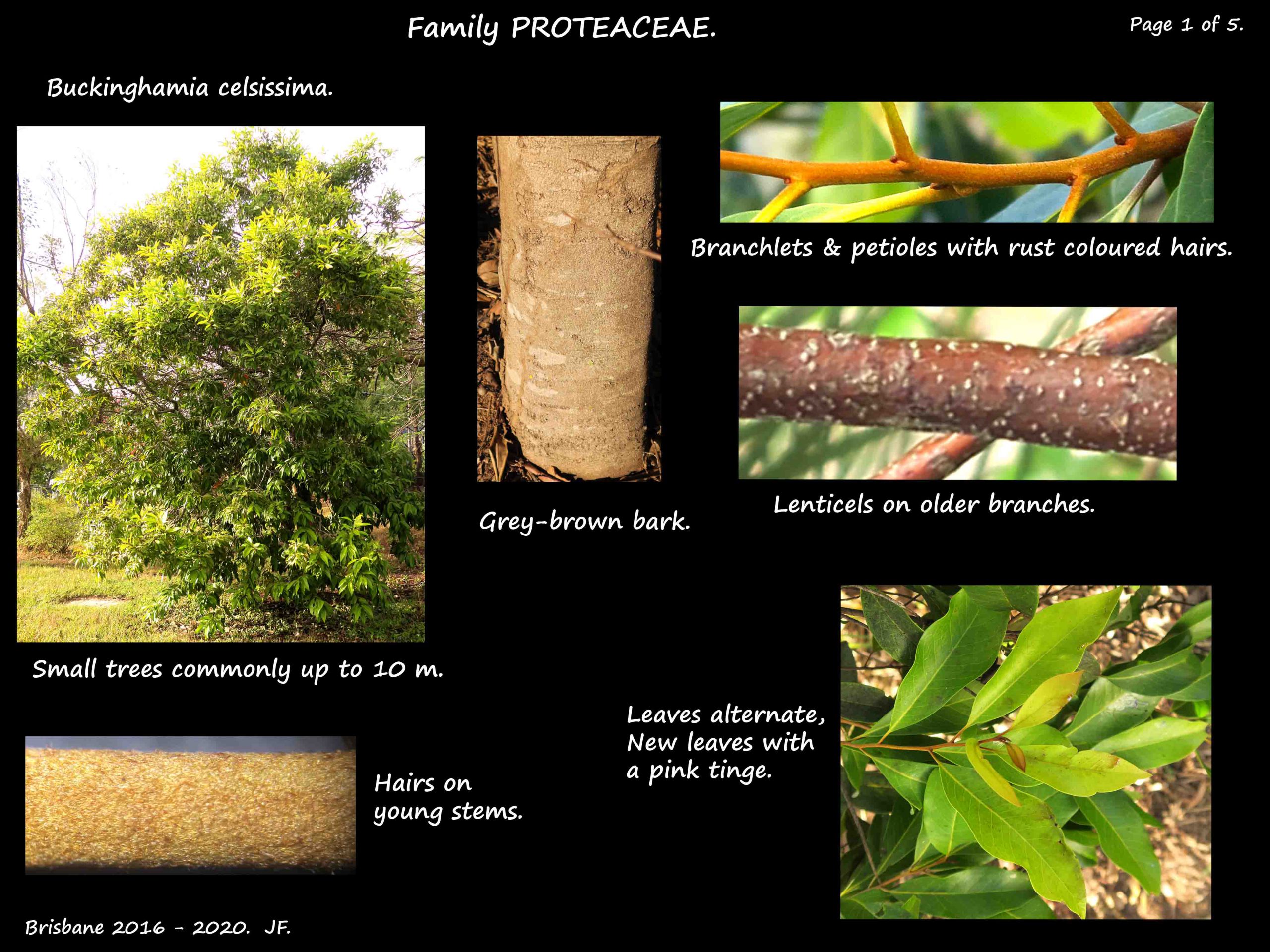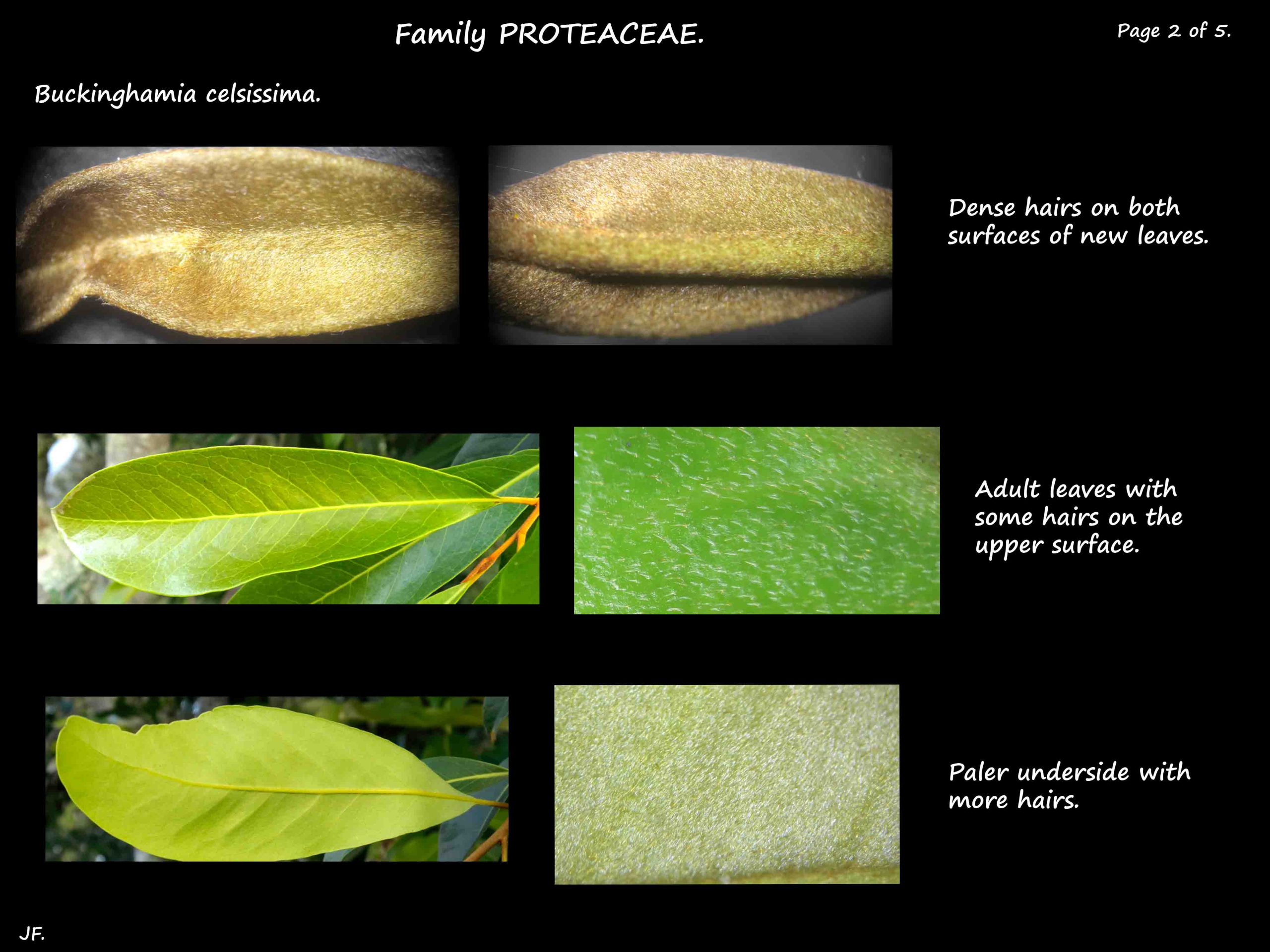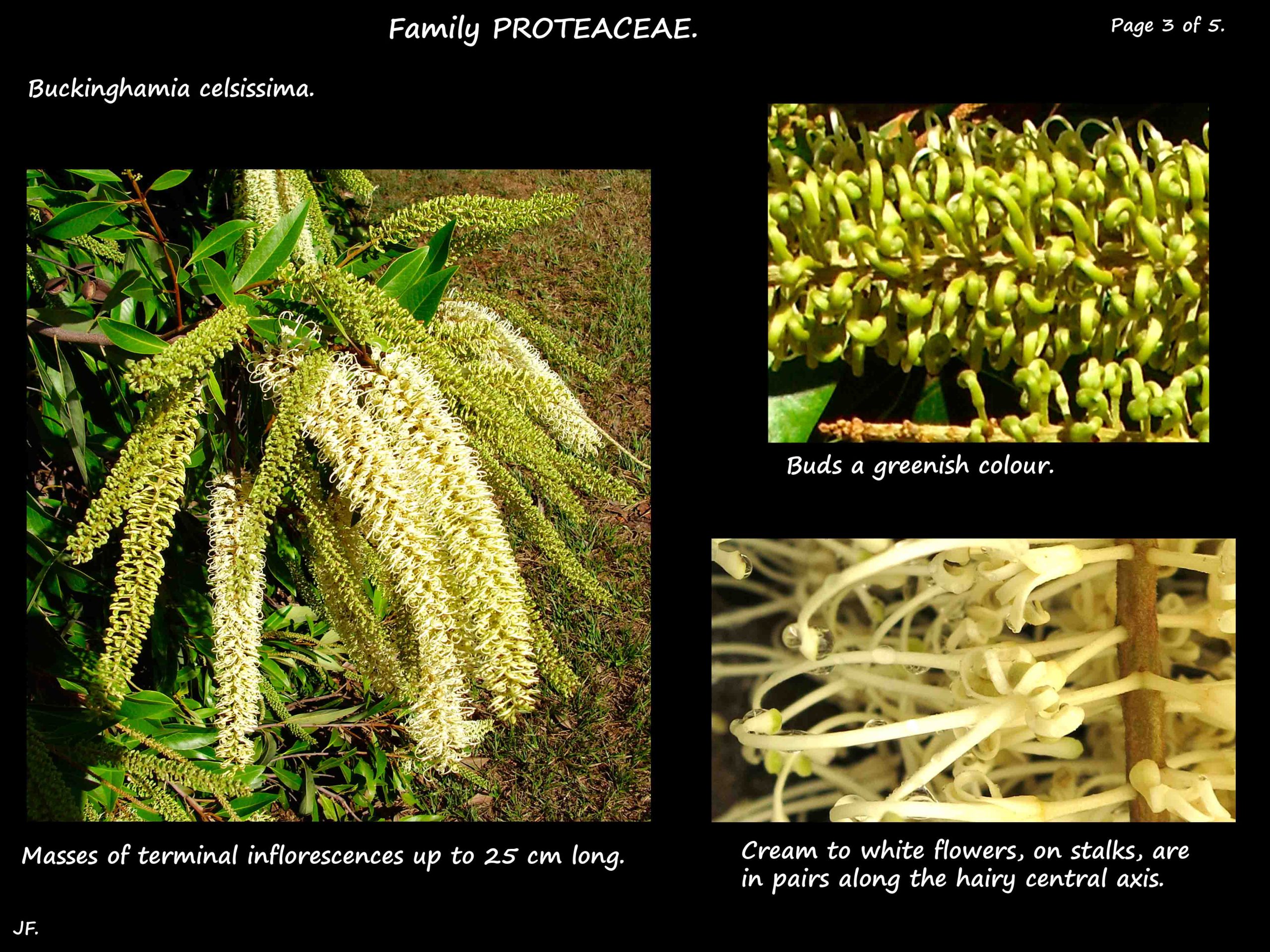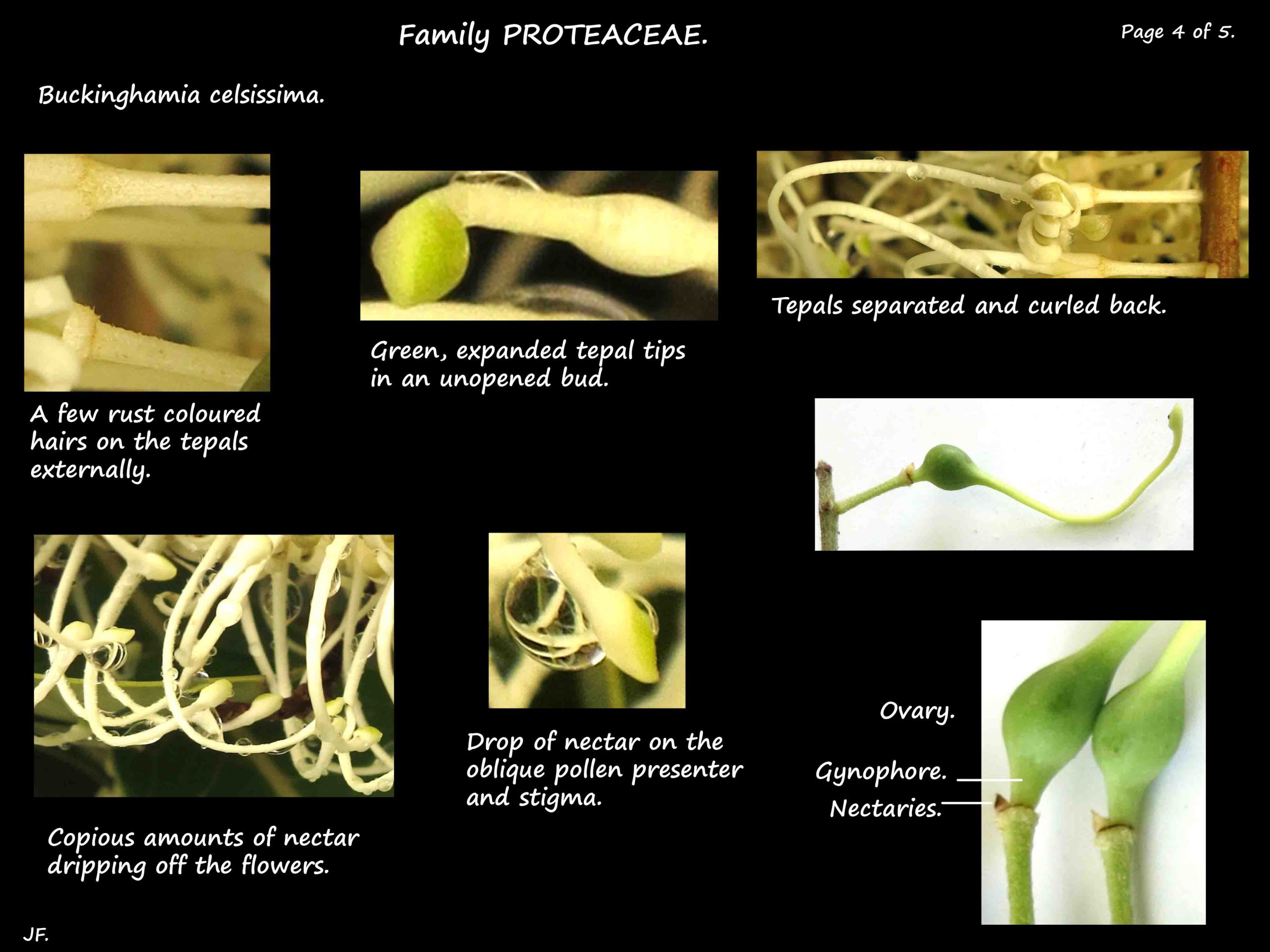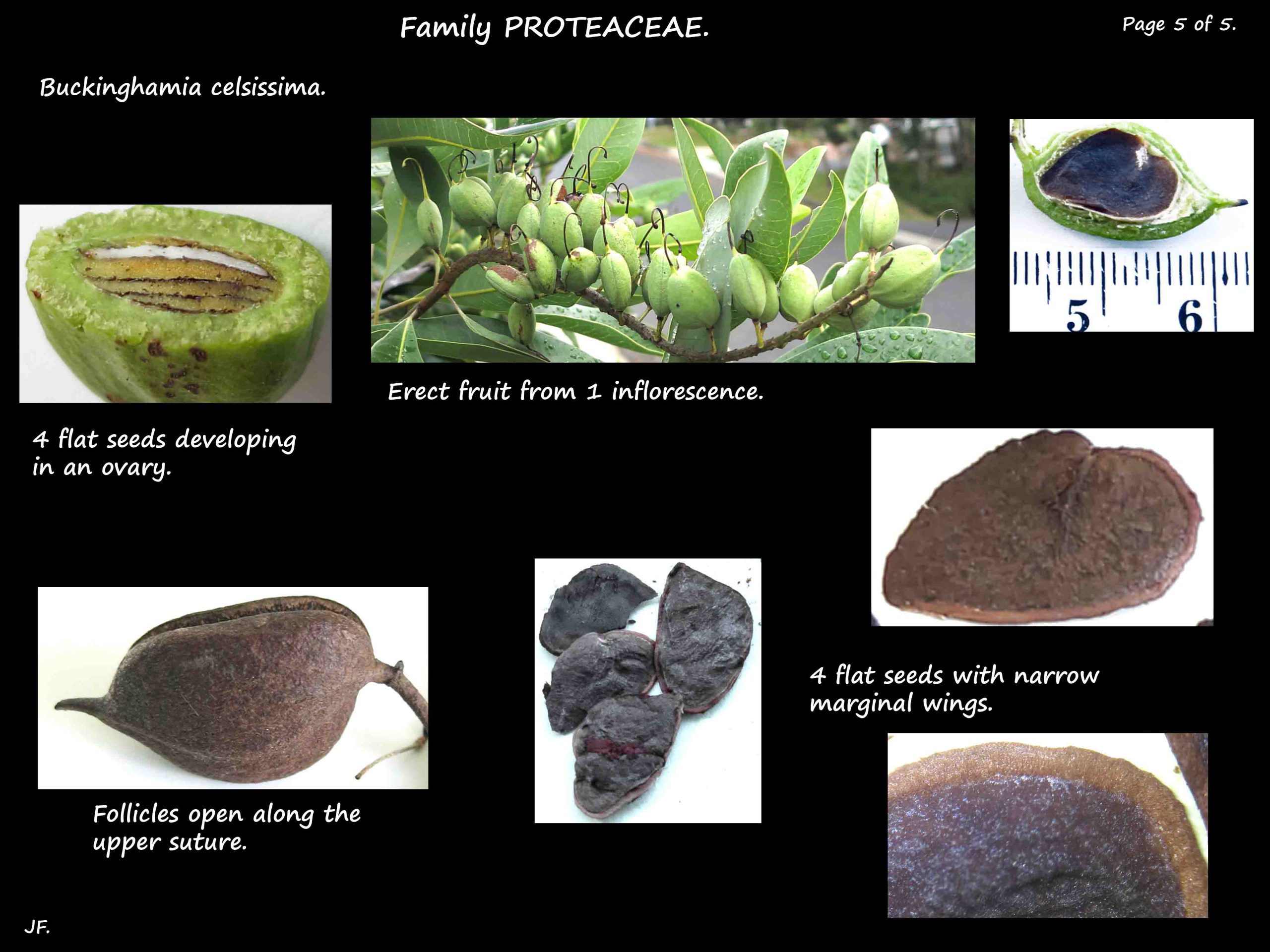Buckinghamia celsissima.
Family Proteaceae > Subfamily Grevilleoideae > Tribe Embothrieae > Subtribe Hakeinae.
There are only 2 species with both endemic in Queensland – Buckinghamia celsissima and B. ferruginiflora.
Buckinghamia celsissima, the Ivory Curl or Spotted Silky Oak is commonly seen in public spaces.
They are mediun shrubs up to small trees usually around 10 m high.
They have a narrow, greyish-brown trunk and a rounded top.
Small branchlets may have rust-coloured hairs.
There are small nodules (lenticels) on the older branches.
The alternate leaves are simple, elliptic, dark green above and paler underneath.
They are up to 16 cm long and on a petiole 1 to 2 cm long.
The blades have a rounded or pointed tip.
Younger leaves may be lobed.
Terminal inflorescences are spikes 20 to 25 cm long with densely packed flowers in pairs.
On hairy stalks about 7 mm long the 4 tepals are up to 20 mm long.
Tepals are white to cream but can be greyish or pale brown due to hairs externally.
When the pollen is mature the tepal tube splits and the tepal tips curl backwards.
The 4 anthers lie inside the expanded tepal tips.
The hypogynous glands are fused into a partial ring with a lobed upper edge.
The hairless ovary, on a stalk or gynophore, has 4 ovules in the single locule.
The style is 1 to 2 cm long with a small stigma on the oblique pollen presenter.
The fruit are woody ovate follicles up to 3 cm long that split along the upper suture.
The 4 flat seeds have a narrow marginal wing.
Buckinghamia ferruginiflora has dense rust-coloured hairs on the small shoots.
The cream flowers appear reddish due to the dense hairs on the outer surface of the tepals.
J.F.
